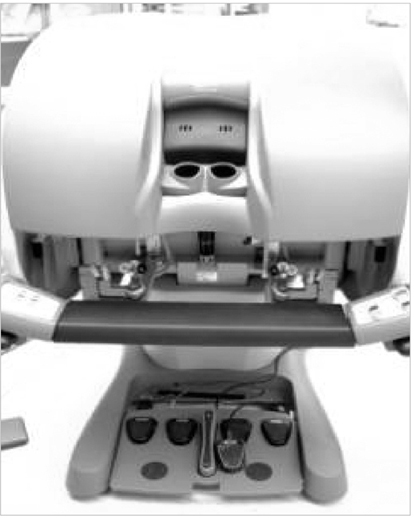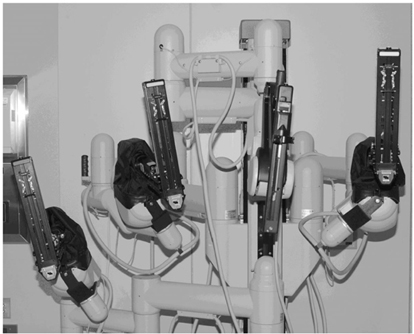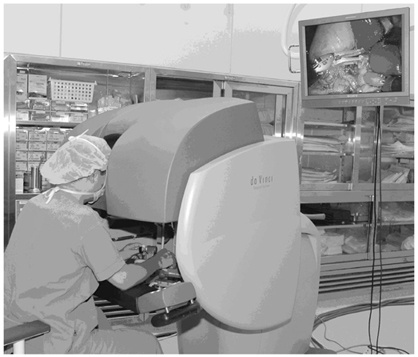J Korean Med Assoc.
2008 Jan;51(1):67-73.
The Present and Future of Robotic Surgery
- Affiliations
-
- 1Department of Urology, Yonsei University College of Medicine, Korea. khrha@yuhs.ac
Abstract
- Since the beginning of the 21st century, the emergence of innovative technologies has made further advances in minimal access surgery possible. Robotic surgery and telepresence surgery effectively addressed the limitations of laparoscopic procedures, thus revolutionizing minimal access surgery. Surgical robots provide surgeons with technologically advanced vision and hand skills. As a result, such systems are expected to revolutionize the field of surgery. In that time, much progress has been made in integrating robotic technologies with surgical instrumentation. However, robotic surgery will not only require special training, but it will also change the existing surgical training pattern patters and reshape the learning curve by offering new solutions, such as robotic surgical simulators and robotic telementoring. This article provides an introduction to medical robotic technologies, describesdevelops a possible classification, reviews the evolution of a surgical robot, and discusses future prospects for innovation. In the future, surgical robots should be smaller, less expensive, easier to operate, and should seamlessly integrate emerging technologies from a number of different fields. We believe that, in the near future Aas robotic technology continues to develop in the near future, we believe that almost all kinds of endoscopic surgery will be performed by this technology.
Figure
Reference
-
1. Swanstrom LL, Kozarek R, Pasricha PJ, Gross S, Birkett D, Park PO, Saadat V, Ewers R, Swain P. Development of a new access device for transgastric surgery. J Gastrointest Surg. 2005. 9:1129–1136.
Article2. Rosser JC, Wood M, Payne JH, Fullum TM, Lisehora GB, Rosser LE, Barcia PJ, Savalgi RS. Telementoring. A practical option in surgical training. Surg Endosc. 1997. 11:852–855.3. Lee BR, Bishoff JT, Janetschek G, Bunyaratevej P, Kamolpronwijit W, Cadeddu JA, Ratchanon S, O'Kelley S, Kavoussi LR. A novel method of surgical instruction: international telementoring. World J Urol. 1998. 16:367–370.
Article4. Schneider A, Wilhelm D, Bohn U, Wichert A, Feussner H. An evaluation of a surgical telepresence system for an intrahospital local area network. J Telemed Telecare. 2005. 11:408–413.
Article5. Bowersox JC, Cordts PR, LaPorta AJ. Use of an intuitive telemanipulator system for remote trauma surgery: an experimental study. J Am Coll Surg. 1998. 186:615–621.
Article6. Marescaux J, Leroy J, Gagner M, Rubino F, Mutter D, Vix M, Butner SE, Smith MK. Transatlantic robot-assisted telesurgery. Nature. 2001. 413:379–380.
Article7. Marescaux J, Leroy J, Rubino F, Smith M, Vix M, Simone M, Mutter D. Transcontinental robot-assisted remote telesurgery: feasibility and potential applications. Ann Surg. 2002. 235:487–492.
Article8. Satava RM. The operating room of the future: observations and commentary. Semin Laparosc Surg. 2003. 10:99–105.
Article9. Marescaux J, Solerc L. Image-guided robotic surgery. Semin Laparosc Surg. 2004. 11:113–122.
Article10. Marescaux J, Rubino F, Arenas M, Mutter D, Soler L. Augmented-reality-assisted laparoscopic adrenalectomy. JAMA. 2004. 292:2214–2215.
Article




